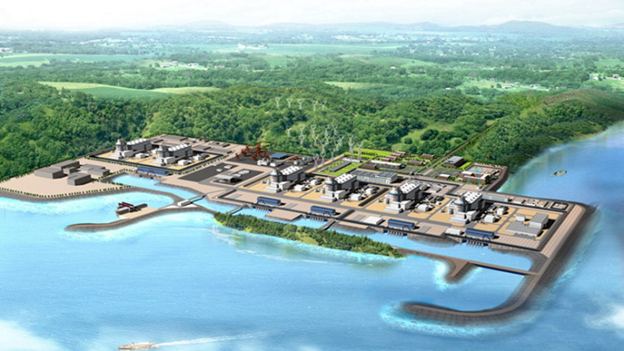China has begun the construction on its first nuclear reactor unit of the year with the pouring of first concrete at the Lufeng Nuclear Power Plant in Guangdong province. The milestone was completed on Monday. It marks the official start of the plant’s No. 1 reactor, which utilizes the CAP1000 third-generation pressurized water reactor (PWR) design. According to China General Nuclear Power Corporation (CGN), the CAP1000 design includes modular construction, digital building technologies, and automated welding to improve safety and efficiency.
As reported by China Daily, the plant will ultimately house six reactors, with Units 5 and 6 already under construction since 2022 and 2023, respectively. These last two units employ the Hualong One reactor which is based on China’s domestically designed third-generation nuclear technology.
When it is fully operational, the Lufeng nuclear power plant is expected to generate approximately fifty-two billion kilowatt-hours of electricity annually. This source of energy will help reduce China’s reliance on coal, saving an estimated sixteen million metric tons of standard coal per year. It will also cut carbon dioxide emissions by around forty-three million tons.
CGN emphasized that the Lufeng nuclear power plant project aligns with China’s commitment to reducing carbon emissions and will expand its clean energy infrastructure. CGN stated, “The official start of the main project of Unit 1 marks the full start of the construction of the dual third-generation nuclear power units of the Guangdong Lufeng Nuclear Power Project.”
The Lufeng nuclear power plant site was originally approved for four CAP1000 reactors by China’s National Development and Reform Commission in 2014. However, state approval for Units 1 and 2 was delayed until August 2023, while Units 3 and 4 are still waiting for final clearance.
The expansion of nuclear power in China is accelerating. The country approved the construction of ten nuclear power units annually over the past three years. with more nuclear power plants expected to break ground in the days ahead. By the end of 2025, China’s total installed nuclear capacity is estimated to reach sixty-five gigawatts, reinforcing its position as a world leader in nuclear energy development.
The CAP1000 reactor is a Chinese adaptation of the Westinghouse AP1000 reactor. It was developed by the Shanghai Nuclear Engineering Research and Design Institute. CAP1000 reactors feature passive safety systems and improved fuel efficiency, contributing to China’s strategy for sustainable nuclear power growth.
Meanwhile, Units 5 and 6 at the Lufeng nuclear power plant, which utilize the Hualong One reactor design, are scheduled for completion in 2026 and 2027. Hualong One is also known as HPR1000. It was developed jointly by CGN and China National Nuclear Corporation, further strengthening China’s independent nuclear technology capabilities.
The Lufeng project is one of several major nuclear initiatives currently underway in China. The Guangdong Lianjiang Nuclear Power Plant which began construction in July 2023, also features CAP1000 reactors, further reinforces the country’s commitment to nuclear energy expansion.
With ongoing investments in advanced nuclear technologies, China is securing its role as a leader in clean energy, reducing its reliance on fossil fuels, and meeting its carbon neutrality goals.
Nuclear Reactors 1482 – China Adds Two New Reactors To The Lufeng Nuclear Power Plant As It Expands Nuclear Power

